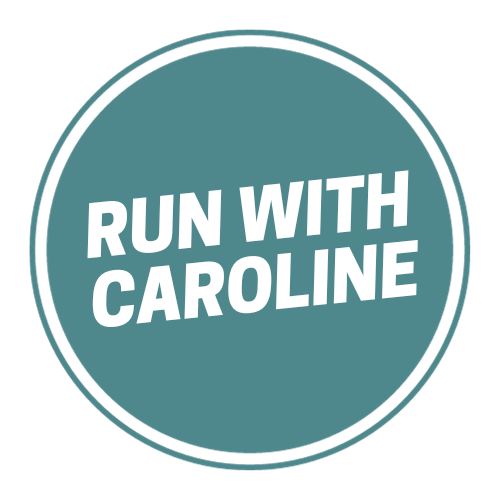Despite what many may think, endometriosis (also known as ‘endo’) is more than just a painful period.
Millions of women worldwide suffer with this painful condition, many of which have to live with pain on a daily basis, not just during their period.
As an invisible illness, it can be hard for people to understand that endometriosis can have a significant impact on those living with the disease.
Run With Caroline founder Caroline was diagnosed with endometriosis in 2019 so she knows the impact that the disease can have on everyday life:
“Before I was diagnosed with endometriosis, I experienced symptoms that would quite literally stop me in my tracks. If I decided to go for a run, pain would often cut my long run short.
Since my diagnosis, I have had to approach my life and exercise routine differently. Although I’ve found ways to manage the disease, I am still coming to terms with my diagnosis.
Endometriosis flare ups are commonplace for some of those living with the disease, so you really have to learn ways to manage your symptoms.”
If you’re suffering with endometriosis flare ups and wondering how best to deal with them, especially during exercise, then this guide has got you covered.
In this guide we’ll explore:
- What is endometriosis?
- What causes endometriosis?
- What are symptoms of endometriosis?
- What is an endometriosis flare up?
- What causes an endometriosis flare up?
- What are the symptoms of an endometriosis flare up?
- How long does an endometriosis flare up last?
- 5 tips for exercising with endometriosis
- Where can I find out more about endometriosis?
Ready?
Let’s go!
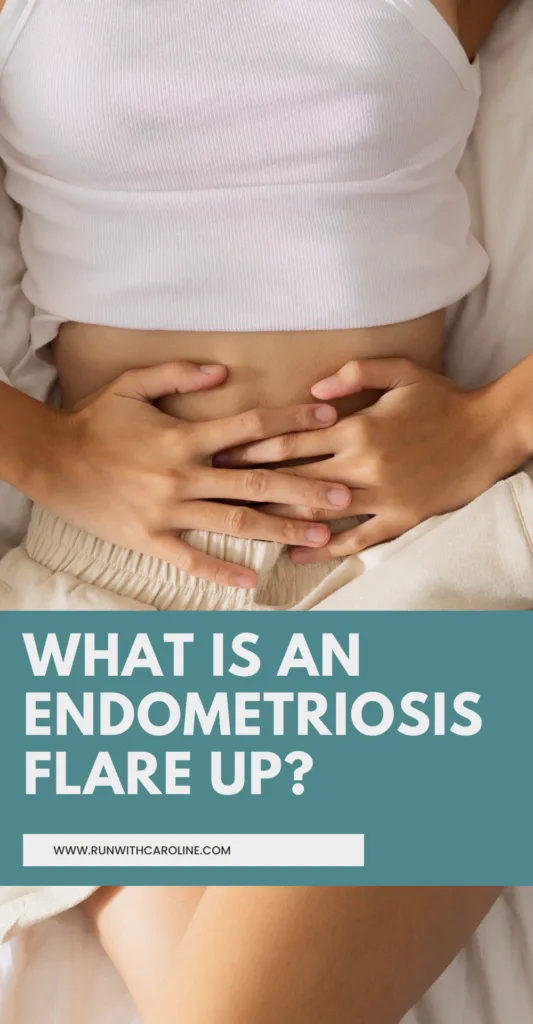
What is endometriosis?
Endometriosis (pronounced endo-mee-tree-osis) is an inflammatory disease where tissue normally found in the lining of the womb grows in other parts of the body such as the ovaries, bladder, bowel and appendix.
It is estimated that 1 in 10 women have endometriosis, and it can affect any woman of reproductive age.
Shockingly, it takes on average 8 years to receive a diagnosis for endometriosis.
According to a 2018 study, despite a range of symptoms, diagnosis of endometriosis is often delayed due to lack of non-invasive, definitive and consistent biomarkers for diagnosis of endometriosis.
It is also thought that there are still problems with misinformation in the medical community when it comes to diagnosing endometriosis.
The primary cause of this is that women’s reproductive health conditions like endometriosis tend to receive less funding for research.
In addition, a lot of damaging taboos still exist today when it comes to menstrual health.
According to an article from Medical News Today:
- Women’s reproductive health attracts far less research funding than almost all other medical research.
- Society’s reluctance to speak plainly about periods is one of the reasons why issues with women’s reproductive health are so underrecognised and under researched.
Related: How to stop vaginal chafing when running
What causes endometriosis?
There are several theories behind what causes endometriosis, but more research is needed to understand the primary causes of the condition.
According to the NHS, several theories have been suggested, including:
- Genetics – the condition tends to run in families and affects people of certain ethnic groups more than others.
- A problem with the immune system – the body’s natural defence against illness and infection.
- Endometrium cells spreading through the body – in the bloodstream or lymphatic system.
Unfortunately, there is no cure for endometriosis.
Related: 6 tips for successfully running with a chronic illness
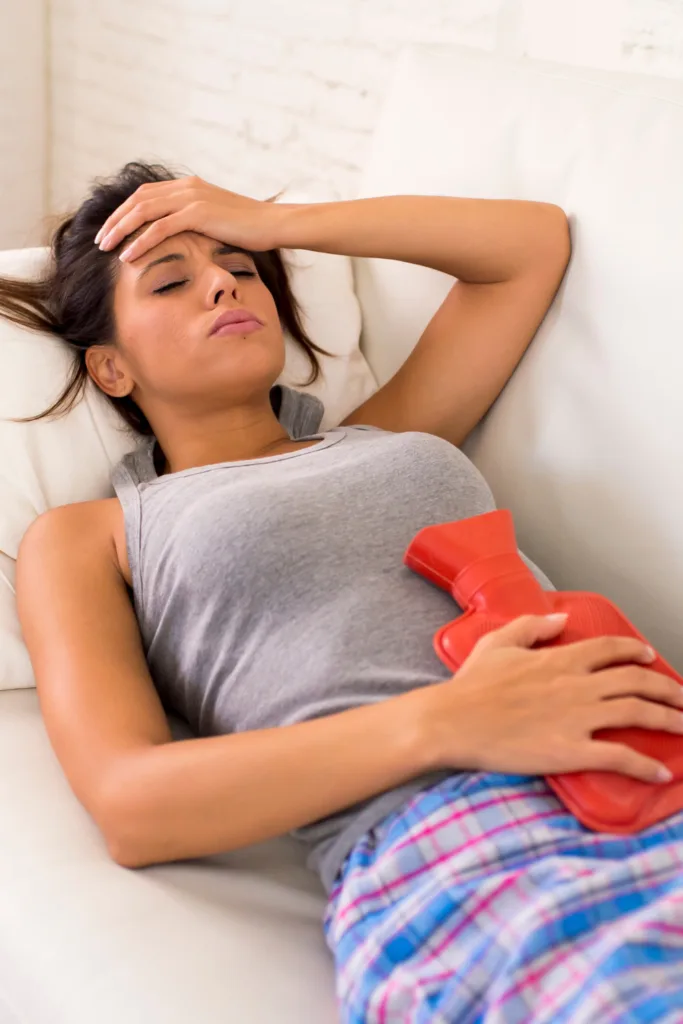
Related: Exercise after hernia surgery: The complete guide for women
What are the symptoms of endometriosis?
Endometriosis has a wide range of symptoms and symptoms can vary person to person.
The top reported pain is pelvic pain, and often the pain correlates with the menstrual cycle.
One study on 246 women at reproductive age with confirmed endometriosis concluded that 77.2% of women were symptomatic.
Adding that the most common complaints were:
- Pelvic pain (71.1%)
- Dysmenorrhea (menstrual cramps) (69%)
- Dyspareunia (painful intercourse) (45.2%)
The severity of the disease often doesn’t correlate with the intensity of symptoms.
Some women, for example, have a severe form of the disease but don’t have painful symptoms.
Other women on the other hand have a mild form of the disease but suffer with painful symptoms.
In addition, other conditions like irritable bowel syndrome (IBS) can cause similar symptoms.
It is for these reasons that endometriosis is often hard to diagnose or is mis-diagnosed as a bowel or digestive disorder.
One 2020 United States study recorded that:
- 75.2% of patients with endometriosis reported being misdiagnosed with another physical health condition.
- 95.1% of patients were diagnosed with a mental health problem.
- 49.5% of patients reported being diagnosed with both before they received an endometriosis diagnosis.
According to a 2020 study, patients with the symptomatic course of the disease present higher levels of stress, somatisation and fatigue in daily life.
Symptoms of endometriosis include:
- Painful periods
- Heavy periods
- Pelvic pain
- Bloating (also known as ‘endo belly’)
- Brain fog
- Tiredness and fatigue
- Leg pain
- Lower back pain
- Pain on either side of the pelvis
- Pain during and after sex
- Pain when urinating
- Pain when pooping
- Blood in your poop
- Constipation
- Diarrhoea
- Nausea
- Infertility
- Difficulty getting pregnant
- Bleeding before and after your period
Related: Should you work out on your period? 6 best exercises to do on your period
Related: Does chocolate help with period cramps? Everything you need to know
What is an endometriosis flare up?
An endometriosis flare up is when symptoms become exacerbated.
Flare ups intensify symptoms of the disease and typically subside after a few hours, but they can be debilitating.
They can be triggered by a number of different things – more on that below.
Related: What is runner’s face? Causes + 10 prevention tips
What causes an endometriosis flare up?
An endometriosis flare up can be caused by:
- Changes in the menstrual cycle – some women experience flare ups at different times of their menstrual cycle, for example in the days leading up to their period.
- Changes in activity levels – increased or decreased activity levels can cause symptoms to flare up
- Changes in diet – some inflammatory foods like caffeine, alcohol and red meat are thought to exacerbate endometriosis symptoms.
- Changes in the weather – some women with endometriosis have reported that cold weather can cause their symptoms to flare up
- Changes in stress levels – increased levels of the stress hormone cortisol can cause endometriosis to flare up
- Changes in sleep – a bad night’s sleep or poor sleep habits can cause symptoms to worsen.
Related: What does running do for your body? 10 benefits of running

Related: Moisture wicking underwear: Benefits + where to buy
What are the symptoms of an endometriosis flare up?
You may be wondering: “What does an endometriosis flare up feel like?”
Flare up symptoms can vary person to person, but reported systems are:
- Severe pelvic pain
- Bloating
- Diarrhoea
- Nausea
- Tiredness and fatigue
- Lower back pain
- Leg pain
- A burning sensation in the pelvis
- A tugging sensation in the pelvis
To give you an idea of how bad an endometriosis flare up can get, here are how some women describe a endometriosis flare up:
“It feels like my insides are being carved out like a pumpkin.”
“It feels like someone is prodding my insides with a hot poker.”
“It feels like there is an animal trapped inside my pelvis and lower back and it’s trying to claw its way out.”
Related: How to get a runner’s body: Characteristics + 6 training tips
How long does an endometriosis flare up last?
Depending on the severity of symptoms, a flare up can last anywhere between a few minutes to a few hours.
Some women experience multiple flare ups in a single day.
Other women experience only one or two over a period of a few months.
It really depends on your own unique set of symptoms.
Related: Can you exercise during IVF? Tips + exercises to avoid
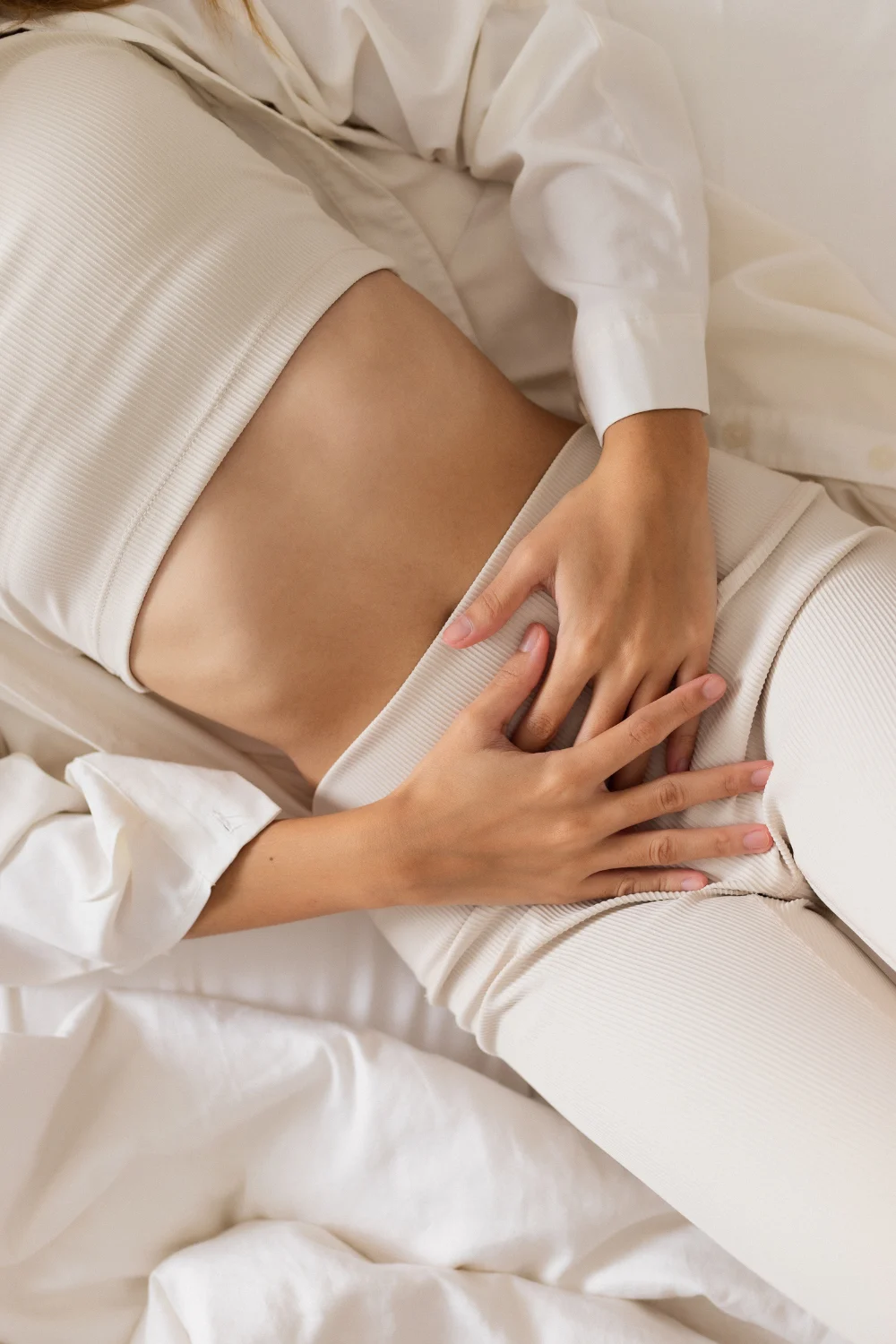
5 tips for exercising with endometriosis
Now you know more about endometriosis, here are tips for exercising with endometriosis.
#1 Be kind to yourself
When you have a chronic illness, it’s important you know your limitations and treat yourself with kindness.
If you’re used to exercising regularly, a new diagnosis may mean you have to limit the amount of exercise temporarily if it is causing your symptoms to flare up.
Exercise can help with symptoms – it’s important you are not completely inactive.
However, it’s all about finding the right balance and taking rest days when you need to.
#2 Take it slowly
Huge increases in activity levels can cause symptoms to intensify, so take it slowly if you’re starting a new fitness routine or training for a distance event.
Living with a chronic illness is all about compromise and finding the routine that works for you and your health needs.
#3 Consider low impact exercise
Low impact exercise like walking and yoga are great alternatives if you find activities like running and high intensity training exacerbate your symptoms.
It’s important you respect your body and not do exercises that feel uncomfortable for you.
Activities like yoga are also great for menstrual pain and there are many yoga poses that are shown to alleviate pelvic pain.
#4 Be prepared
If you’re planning a long run then it’s important you be prepared in case an endometriosis flare strikes.
Consider planning a route that is close to home or close to public transport in case you need to stop your run.
#5 Adjust your training plan
With a chronic illness, depending on your symptoms, you may not be able to attack your training plan like you once did.
By making small changes, you will still be able to enjoy exercise and stay active but on your terms.
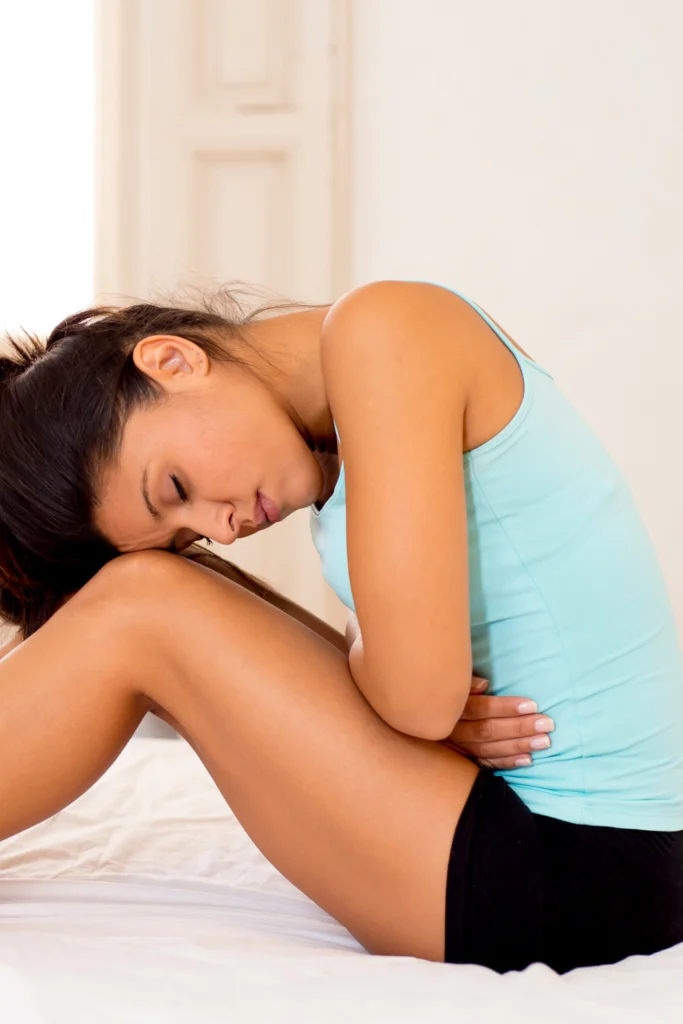
Where can I find out more about endometriosis?
Here are some resources if you want to find out more about endometriosis:
- Endometriosis UK – a UK-based charity to help those living with the disease overcome the impact of endometriosis.
- Nancy’s Nook Endo – an endometriosis learning library founded by Nancy Peterson who has paved the way for endometriosis support and care over the last 40 years.
- Endometriosis Foundation of America (EndoFound) – a US-based non-profit that aims to increase disease recognition, provide advocacy, facilitate expert surgical training and fund endometriosis research.
- Endo Black – a black-women-led organisation advocating for African American women and women of colour living with endometriosis.
- Endometriosis Australia – an Australian-based charity that aims to increase recognition of endometriosis, provide endometriosis education programs and help fund endometriosis research.
- 5 things I wish I’d known before returning to running - March 3, 2024
- Running 20 minutes a day: Benefits + how to start - January 27, 2024
- How to run your first 2 hour half marathon - January 16, 2024
